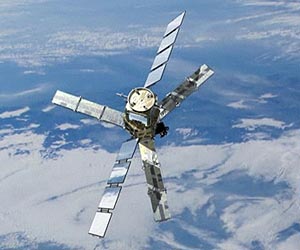
The satellite carries an innovative sensor to image brightness temperature. As key observables, these images are used as input to derive global maps of soil moisture and ocean salinity. Given the success of the mission so far, the maps are expected to be available by the autumn. |
Early results are proving very encouraging with its first observations due to be released in early July.
ESA's Soil Moisture and Ocean Salinity (SMOS) satellite was launched in November to gather data on moisture in the surface layers of soil and salt in the surface of the oceans.
SMOS will improve our understanding of the water cycle and help advance weather and climate studies.
SMOS has completed an intense programme of calibration and commissioning and, in May, it formally began its operational life delivering data.
Although it is still early days, scientists and users are very impressed with the first snapshots of 'brightness temperature' - the microwave radiation emitted from Earth's surface.
ESA's Mission Manager, Susanne Mecklenburg said, "We still have some way to go before the full soil moisture and ocean salinity data products are available, but the brightness temperature data we have been working on for the past months clearly demonstrate what this advanced mission has to offer."
The satellite carries an innovative sensor to image brightness temperature. As key observables, these images are used as input to derive global maps of soil moisture and ocean salinity. Given the success of the mission so far, the maps are expected to be available by the autumn.
To test the usefulness of SMOS data for numerical weather prediction, data are also being delivered, within three hours of sensing, to meteorological centres such as the European Centre for Medium-Range Weather Forecasts
.






